With Christmas coming up I got me a present myself. Under the pretense that I would try out a new review format I didn’t wait any longer and ripped the package open immediately. Here’s what I “found”…
First Impression
Wow, what a big tome! Not particularly in page count, but its oversize, the feel of its binding and the imposing figure dominating its cover already set a certain tone: This is all about prettiness and quality, a pictorial in its, well, literal sense.
Paper feels nice and hefty, though it hasn’t that gloss finish you might expect. However, this adds to the actual appearance of the pictures in that they become easy to study in detail. Texts are few and far between, so the reader – or rather the beholder – is obviously encouraged to just look at and enjoy the photos without being ‘hampered’ by the written word.
In order to adequately digest the book, though, I would recommend to use some kind of rest or at least to lay it flat open in front of you – its size and heft definitely doesn’t make for a bedtime reading. 😉
Closer Look: Paperwork
Romans/Romeinen was published in 2012 on the initiative of the Stichting Romeinenfestival, the organisation behind a biannual Roman festival at Nijmegen (NL). The publication was in parts also “crowd-funded” by a couple of supporters mentioned in the back of the book.
The tome measures about 38 by 29 centimetres (i.e. about 15 by 11 inches) and comprises 200 pages front to cover. From these 153 are dedicated to page-filling pictures of reenactors, often printed as double spreads (fortunately, due to clever arrangements only little detail’s lost in the fold there). A twofold preface by Paul van der Heijden, president of said organisation at Nijmegen, and Jasper Oorthuys, best known as former editor of the Ancient Warfare magazine, takes up 11 pages, while the legend to the photos adds another 10 pages. The texts don’t take up much print space and are given in two columns, one in the original Dutch, the other in a fairly literal English translation. Overall, easy on the eye.
Finally, a couple of pages bear ‘cutouts’ from the reliefs of Trajan’s column in Rome. According to a preposed note these were added “for purposes of reference”, whatever that might be…
The book retails for EUR 49.50 (about GBP 42.00) plus postage. Not cheap but fairly low pricing for photobooks – especially with a small print run of just 1,500 copies.
Closer Look: Contents
Given the small amount of text, one is tempted to skip the first couple of pages and go right for the photographs. After all, that’s the meat, isn’t it? And anyway, if you have any inkling of the topic you might well recognise what’s actually pictured there, right?
At least, that was my first impulse. Flipping through the pages, though, I felt a bit lost. There is no obvious structure to the array of photos. Also, the overarching chronological order which stretches from the Augustean period (late 1st century BC) to the Late Roman Empire (4th and 5th century AD) isn’t consistent: pictures from differing periods seem to be interspersed at random. Added to that, the 3rd century AD is missing altogether. Therefore the book obviously doesn’t follow a development pattern as, for example, taken by VEX LEG VIII AVG with their Generationes project. Neither are other compositions like a breakdown into military and civilian costume, legionary and auxiliary troops, upper and lower classes or some such recognisable.
 The photos are rather composed in an associative way. Thence, colourful attires of Roman officers are paired off with ordinary footsloggers, fancily dressed priests with workers in basic tunics and so on. Quite impressive are the studio shots of actual horses! A pity, though, that no indication is given which group each individual belongs to – these are just briefly mentioned in summary in the preface.
The photos are rather composed in an associative way. Thence, colourful attires of Roman officers are paired off with ordinary footsloggers, fancily dressed priests with workers in basic tunics and so on. Quite impressive are the studio shots of actual horses! A pity, though, that no indication is given which group each individual belongs to – these are just briefly mentioned in summary in the preface.
Some reenactors appear in several photos, often in full-length, sometimes in portrait shots, sometimes interacting with each other. Most poses, however, are quite static, and one could have wished for more ‘scenic shots’ instead of people posing like statues and gazing off into the far distance. At the same time, however, this is where the pin-sharp photos do excel: You are able to study the pictures in detail and recognise individual rivets of the chainmail, engravings on trinkets or the actual texture of fabrics. It is almost like you were there with the reenactor right in front of you. So these pictures are taken – or made? – for close inspection.
Assembling a Structure
Admittedly, this can come as no surprise for anyone who’s read the preface by Paul van der Heijden. In his words the aim of this publication was “to freeze” the display of Roman reenactors which is otherwise only a temporary affair. At the same time the book should be a lasting testimony – “for eternity”! – of the current state-of-the-art in that ever-changing hobby.
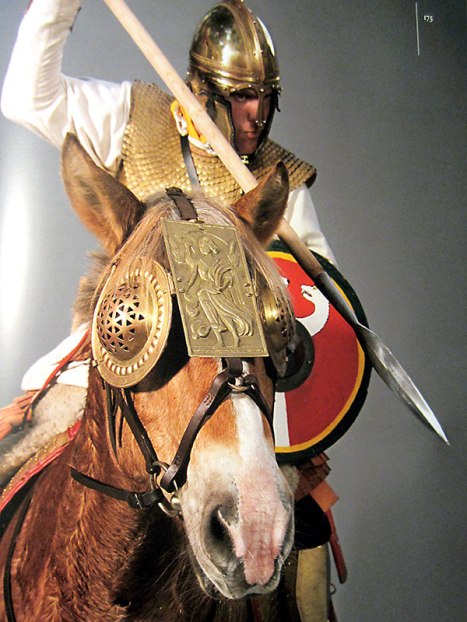 So, the panorama provided by the book is, in fact, not one of Roman society or even Roman life in the north-western provinces (as the subtitle might suggest). It is a cross-section of a particular hobby scene – of course, with all its boundaries and vagaries.
So, the panorama provided by the book is, in fact, not one of Roman society or even Roman life in the north-western provinces (as the subtitle might suggest). It is a cross-section of a particular hobby scene – of course, with all its boundaries and vagaries.
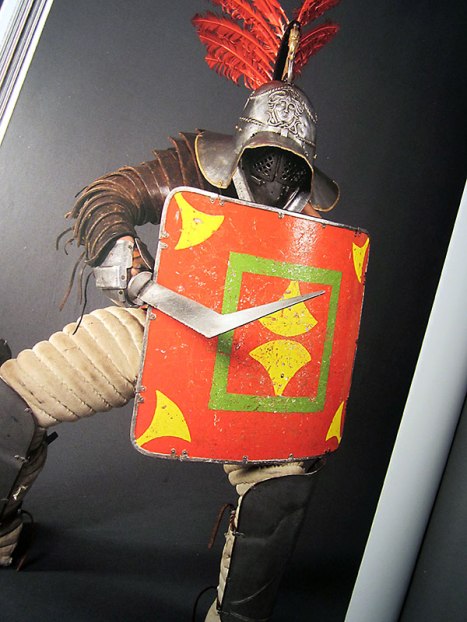 Because therefore the Roman military of the 1st and 2nd century AD is pretty dominant. Therefore the accompanying texts read like a record of a reenactor’s presentation with pretty basic information and lots of references to the random visitor’s prior knowledge (Asterix, Gladiator…). And, finally, therefore it is basically a book picturing modern people in ‘historically informed’ costumes.
Because therefore the Roman military of the 1st and 2nd century AD is pretty dominant. Therefore the accompanying texts read like a record of a reenactor’s presentation with pretty basic information and lots of references to the random visitor’s prior knowledge (Asterix, Gladiator…). And, finally, therefore it is basically a book picturing modern people in ‘historically informed’ costumes.
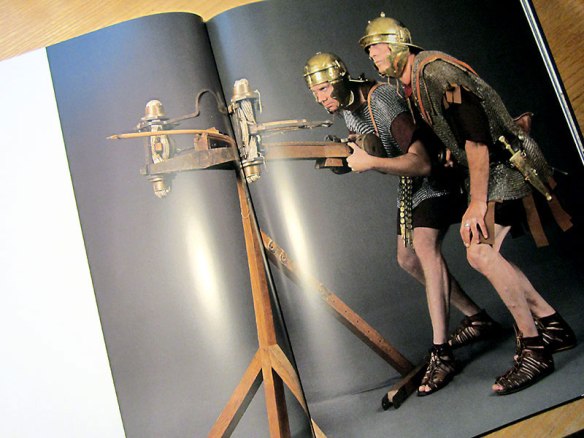 Before you rage-quit, though: That is not to distract from the love and care that went into those presentations. There are a few ‘off-the-shelf’ pieces on display (some metalwork in particular) but overall the quality of reproductions is fine to excellent. And the coverage of civilians (about 40 pages in total!) is definitely a noteworthy effort.
Before you rage-quit, though: That is not to distract from the love and care that went into those presentations. There are a few ‘off-the-shelf’ pieces on display (some metalwork in particular) but overall the quality of reproductions is fine to excellent. And the coverage of civilians (about 40 pages in total!) is definitely a noteworthy effort.
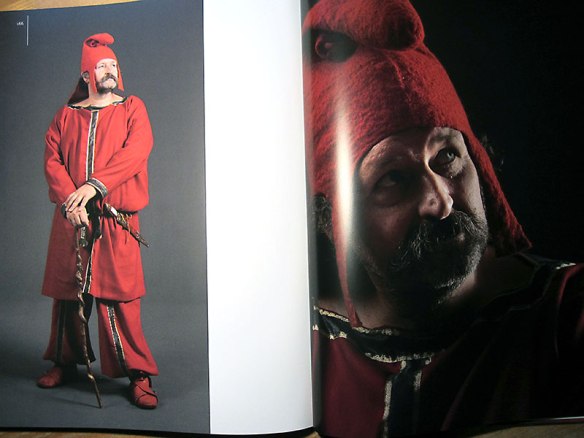 However, the book doesn’t tell the reader about the whys and hows of the reconstructions on display, about the actual material and its interpretation. So the photos should not – and, to be honest, don’t claim to – substitute research of ‘the real thing’.
However, the book doesn’t tell the reader about the whys and hows of the reconstructions on display, about the actual material and its interpretation. So the photos should not – and, to be honest, don’t claim to – substitute research of ‘the real thing’.
A Wargamer’s Perspective
In particular for modelers and wargamers or at least anyone with a collection of Osprey booklets on the topic the literal “added value” of this book is fairly limited. In fact, some presentations resemble quite closely illustrations seen in said Osprey books (or maybe it’s the other way around?).
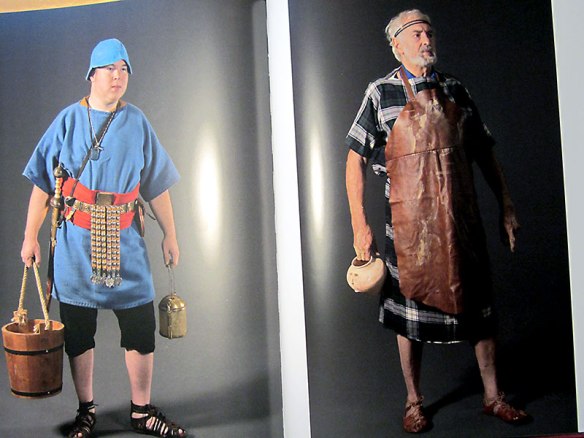 There are few “new insights” delivered – maybe with the exception of some civilian attires which aren’t that present in other, especially wargaming publications. Furthermore, the lack of any obvious “narrative” may put you off as well. Choice and order of photos and motifs might appear to be a bit random, and it’s a rather biased view on Roman history, society or, for that matter, the Roman army.
There are few “new insights” delivered – maybe with the exception of some civilian attires which aren’t that present in other, especially wargaming publications. Furthermore, the lack of any obvious “narrative” may put you off as well. Choice and order of photos and motifs might appear to be a bit random, and it’s a rather biased view on Roman history, society or, for that matter, the Roman army.
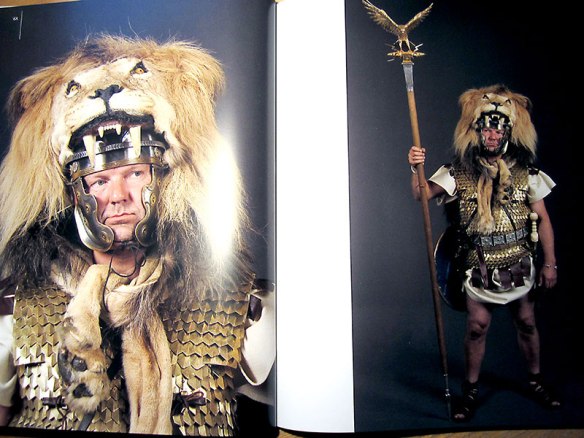 Modelers and wargamers might find systematic approaches more useful. So, to give an example, you might consider this series on the history of the Roman army represented with 54mm models as an alternative, anyway.
Modelers and wargamers might find systematic approaches more useful. So, to give an example, you might consider this series on the history of the Roman army represented with 54mm models as an alternative, anyway.
All that said, though, this is a very pretty, a literal coffee-table book. If you are into reenactment yourself – get it anyway! If you belong to the “uninitiated” crowd but share a love for either all things Roman or, at least, quality books – it may well be worth the investment. However, if you want serious or in-depth information on the topic of Roman clothing and equipment – better skip this one.
Of course, it doesn’t hurt to broaden one’s horizon and see what’s going on in a hobby which is in practice quite distinct from but topically closely related to historical wargaming.
Summary: Cut & Trimmed
Romans/Romeinen is a sumptuous photobook presenting reenactors of the Roman period as if extracted from their ‘natural environment’ of festivals and public displays. Given this angle the focus is clearly on the military of the Early Imperial period – if supplemented by a good number of civilian, Late Roman and even gladiatorial presentations. Definitely meant as a self-celebration (and maybe self-assertion) of that particular reenactment ‘scene’ the book’s target audience may be quite narrow. Its concentration on individuals and details is probably lost on wargamers just interested in battle tactics and uniform guides, while modelers can find more specific and, in literal sense, useful information elsewhere.
However, for people interested in Roman (military) history and particularly for wargamers in search of inspirational material this tome might be a welcome – and quite representative! – addition to their shelves. For these purposes and explicitly despite all the limitations mentioned: Recommended!
Stef Verstraaten (photos), Paul van der Heijden & Jasper Oorthuys (texts): Romans. Clothing from the Roman era in North-West Europe / Romeinen. Kleding uit de Romeinse tijd in Noordwest-Europa. Vantild, Nijmegen (NL) 2012.
Contents: 200 pages, 150 plates. Oversize, hardback.
Recommended Price Point: €49.50
Photos taken from the book (sorry for the bad lighting) by kind permission of Jasper Oorthuys. Book bought all by myself, no review copy. 😉
Post Scriptum
There you have it, our first book review. As I’m currently “out of miniatures” this might be a way to stay in touch. Please let me know what you think – and please be honest if you found this one useless, too wordy or whatever.
In any case, I’d like to wish you all Merry Christmas (or however you call it) and a good start into 2014. See you there!

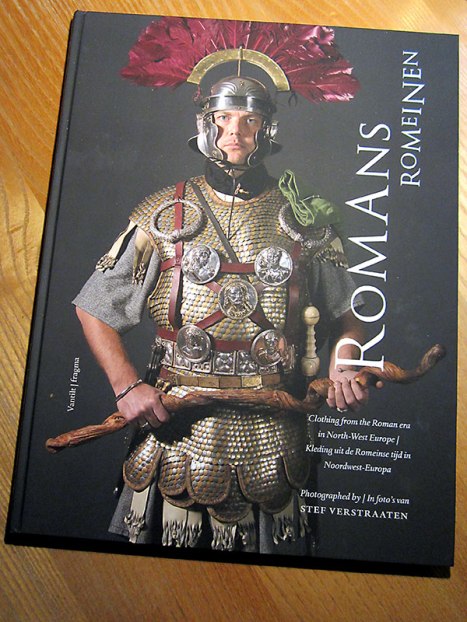
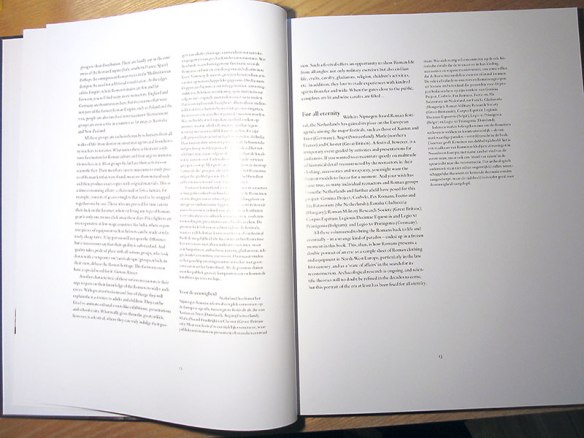
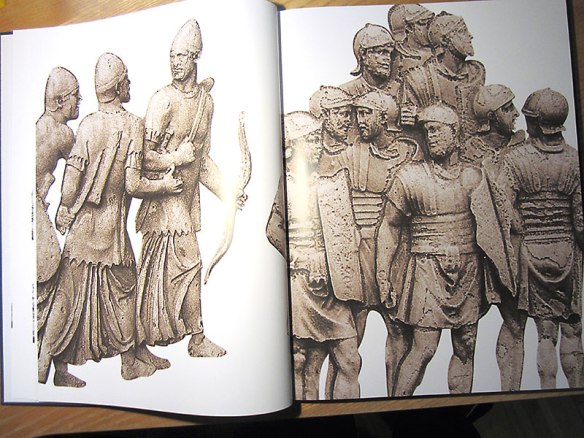
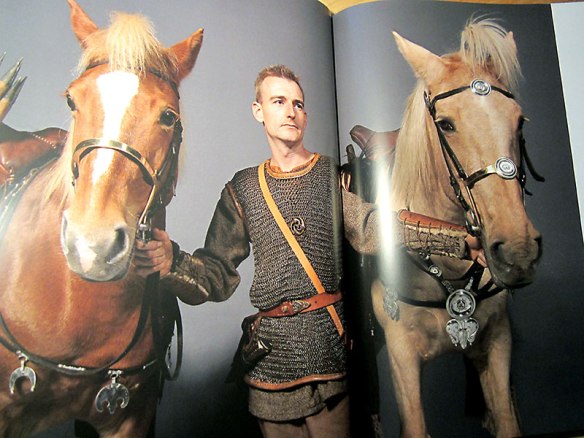
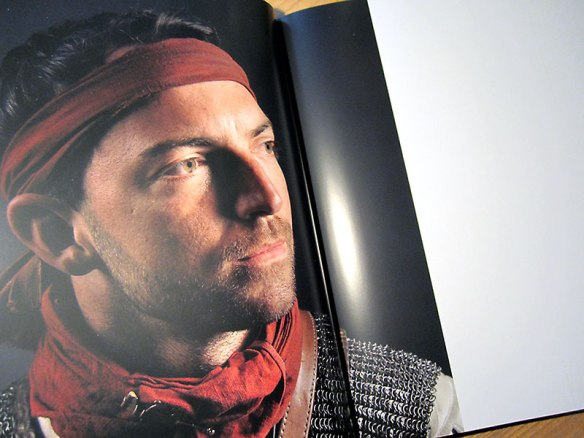
That is a comprehensive review. Looks as though you have got yourself a very good book. The examples of the photographs are gorgeous. If I didn’t already have a million and one things on my to buy list that would be added
I had my eyes on this one too but was a bit discouraged by its price. So thanks to your thoroughly review I’m not too hot on it anymore. The pictures seem to be nice but I’m not really sold on the idea of ‘frozen reenactors’.